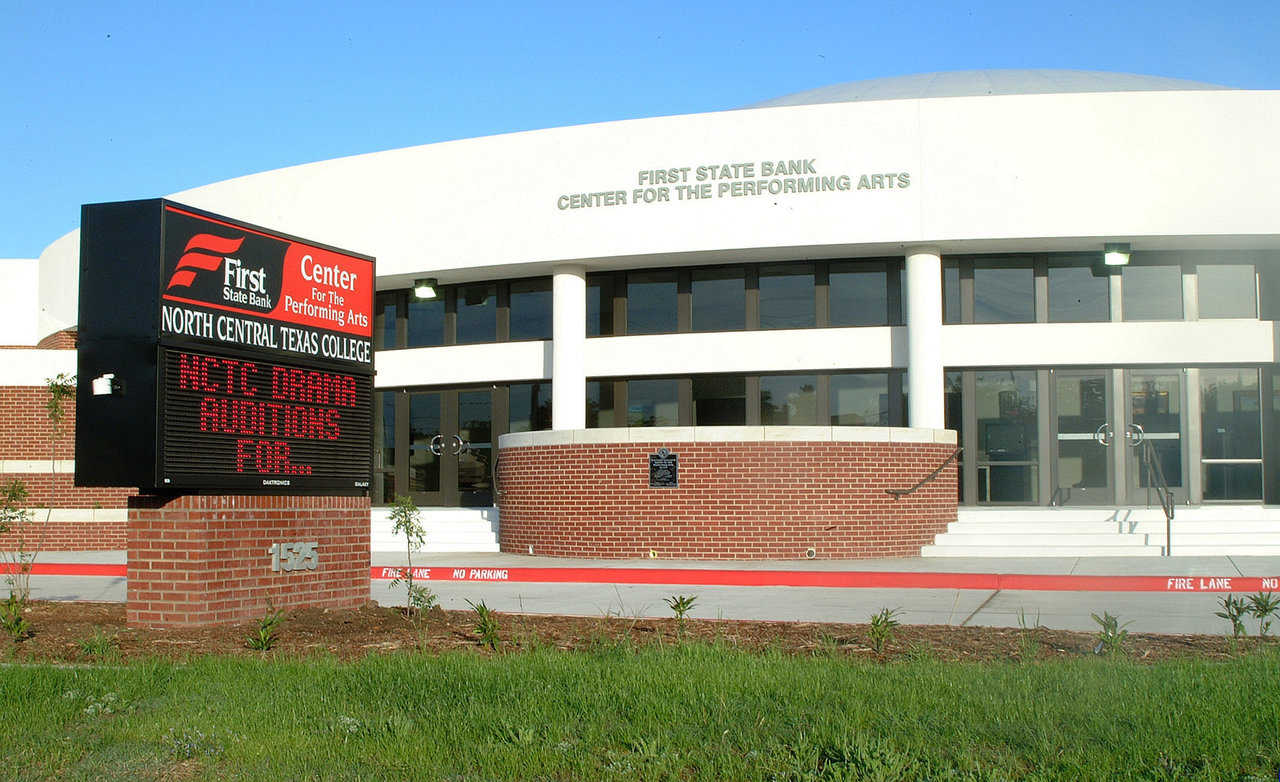“The best experience we have ever had building anything!”
So said Dr. Steve Broyles, Dean of Administrative Services at NCTC (North Central Texas College) in Gainesville. He was talking about NCTC’s new Performing Arts Center at its grand opening dedication on April 8, 2005. His audience included about 300 college administrators, faculty and staff members, community and business leaders and professionals involved in the design and construction of this Monolithic Dome facility.
At an interview a few days later, Dr. Broyles re-emphasized his and the school’s satisfaction. He said, “The college is very pleased with the construction process and the completed facility. We worked very well with Rowland Company (general contractor) throughout the project. The actual construction of the Monolithic Dome went very smoothly, without any problems.”
The FSB Center for the Performing Arts
The Performing Arts Center or FSB Center, as it will be called since the First State Bank in Gainesville is sponsoring the name, includes a Monolithic Dome. Constructed by Dome Technology, Inc. of Idaho Falls, Idaho, it has a diameter of 130 feet and an 8-inch-thick concrete stemwall that is 18 feet high. From the lowest point of its floor to its top, the dome’s interior measures 41 feet. No supporting pillars or posts interrupt that interior. It is a 360-seat theatre with 13,417 square feet of clear-span space.
A lobby, classrooms and other spaces surround the dome, bringing the Center’s overall size to 25,600 square feet.
An architect’s description
Architect Rick Crandall of Crandall Design Group in Mesa, Arizona, who designed the FSB Center, described the dome as a circle within a circle. He said, “It’s called radial design. Another way of saying the same thing is that the theatre stage is the center of attention. The audience radiates around the stage on one side and all services pertaining to the stage radiate around the other side. So there is a public side that wraps around and a service side that wraps around. It’s a very efficient use of space.”
The heart of the dome is its theatre.
Its proscenium stage has a 42-foot proscenium opening, designed large enough to accommodate all kinds of performances, even concerts with full chorale and symphony. The stage is equipped with a 36-foot turntable or revolving section and a functional fly loft with a counterweight fly rigging system for scenery and lighting.
Yards upon yards of soft-looking, smooth, heavy velour flows gracefully across the opening and at the sides of the stage. There are two sets of drapes – a grand or front set made of a dusty-rose color fabric and a navy blue set further back.
FSB’s acoustics
The drapes are part of the acoustics, planned for the FSB Center by Porter Falcon of Falcon Audio-Video in Owasso, Oklahoma. Mr. Falcon has fine-tuned many domes before, but he thinks the FSB Center is really exceptional. “There are two domes that I think stand out as landmarks for Monolithic,” he said. “The first is Living Word Bible Church in Mesa, Arizona. That dome is extraordinary. But this dome, while it’s a different facility in many ways, exhibits terrific characteristics and performs (acoustically) really well.”
Mr. Falcon briefly described a dome’s fine-tuning process. “Domes are speakers or sounding boards,” he said. “You can liken a dome to a satellite dish, because of its curved or parabolic surface, and a satellite dish is a collector. It collects these tiny signals that come fragmented from space and focuses them into a certain area. Domes do exactly the same thing.”
At the FSB Center, the fine-tuning included evaluating all its exposed surfaces, then adding certain materials that absorb undesirable echoes and frequencies but allow others to focus out into the audience.
About 30, four foot by eight foot acoustic panels, that look decorative rather than acoustical, adorn the theatre’s curved wall. Mr. Falcon identified them as “modified Helmholtz resonators.” He said, “It’s a panel that goes back to antiquity. The ancient Greeks and Romans both had extensive knowledge of Helmholtz resonators and how they functioned.”
Seating in the theatre is not in-the-round.
Instead, the 360 roomy, upholstered seats are arranged in a classic Continental pattern with no center aisle, but with extra wide spaces between the rows. To enhance sight lines, the rows are set at a raked angle. Architect Rick Crandall pointed out that the back row seats are only 50 feet from the front of the stage. “There’s not a bad seat in the house,” he said.
A crowning touch
A bass relief border designed by and donated to NCTC by Mr. Crandall crowns the top of the stage. Its design includes musical notes, graceful swirls, classic comedy and tragedy theatre masks and the motto “Artis Gratia” or “Artistry that is great” over the head of a lion.
Mr. Crandall said, “I had five reasons for choosing a lion. The lion was part of Shakespeare’s Globe, the original round theatre. At the Globe, different flags were used to signal a performance. If the king planned to attend, a flag with a lion was flown. So the lion became a symbol for the king and later for Great Britain. The London Royal Theatre carried on this tradition with a lion flag and a bass relief of a lion on each side of the stage. Then it crossed the Atlantic and traveled to the Pacific. New York’s Broadway used bass reliefs of a lion and MGM, the movie company, created its trademark of a roaring Leo the Lion. So the lion’s had a long association with entertainment. Finally, NCTC’s mascot is a lion. They have always used the lion mascot for their sports, and now we’re carrying that mascot to the theatre.”
A room of their own
The FSB Center includes rooms and special spaces for just about every artistic college activity. A lobby hugs the front of the theatre and functions also as a gallery for students’ paintings, sculptures, jewelry and other creative items.
Classrooms, specialty rooms, a 40-seat lecture hall and offices embrace the back of the theatre. There’s a Green Room – that isn’t green – for performers to relax in before going on stage. It has a comfy sofa and arm chairs, a small kitchen with a refrigerator, microwave oven, sink, tables and chairs.
The Drama Department also has a costume room complete with sewing machine, ironing board and iron, laundry appliances, clothes racks and mirrors.
Music students have several rooms: A classroom with ten keyboards and computers at which students can write and arrange music, two classroom pianos that only the instructor can hear, and equipment with which a teacher can give power-point lectures. Of this room, a NCTC music teacher said, “It’s state-of-the-art. It just doesn’t get any better!”
There’s also a Rehearsal Room for instrumental performances with Wenger equipment. Students use it to record their rehearsals. Finally, there’s a lockable storage room with lockable compartments for musical equipment.
The Grand Opening
The FSB Center’s grand opening was a four-day affair of a ribbon-cutting ceremony, tours of the facility, performances by music and drama students and speeches.
Dr. Ann Jagoe, Department Chair of Communication and Fine Arts, described this Monolithic Dome facility as “a student and faculty dream come true.” She sees the FSB Center as a recruiting tool that complements NCTC’s program. Their drama courses fulfill Fine Arts and Humanities core requirements for an Associate Degree and satisfy such requirements for nearly every liberal arts, science or pre-professional degree program at the university level.
Show time!
Rodger Boyce, Assistant to the President, said, “We had a total of four performances of the inaugural main stage production, which showcased the talents of students and faculty from our Drama and Music Departments. This production was specially put together, not only to serve as an entertainment, but also to demonstrate the features and capabilities of the building.”
Singers, musicians and actors enthralled their audience with a two-act presentation that included 13 different scenes. One of those scenes, titled Putting It Together, featured a soloist who sang the story of how the Monolithic Dome was built. A video presentation showing various stages of construction accompanied her.
Fund Raising
Through several innovative programs, NCTC’s Steering Committee raised $3 million in donations. They have a “Best Seat In The House” campaign that allows donors of $500 to have their name inscribed on a special plaque for the arm of a theatre chair. They also have a “Meet The Stars Of Our Show” program. Its donations range from Patron at $2500 to Producer at $20,000. The Steering Committee also successfully persuaded First State Bank to sponsor the naming of the Center.
A pretty package at a bargain price
In a 2004 NCTC press release, Dr. Ronnie Glasscock, the college’s eight president who spearheaded the Center’s construction, said,"One of the principal reasons we started looking a couple of years ago for alternative types of buildings for the proposed performing arts facility in our master plan is that initial estimates, using conventional construction, came in at $10 to $12 million.
“We believe that the Monolithic Dome,” he continued, “will enable us to have a state-of-the-art facility at nearly half the cost of conventional construction. And what’s more, it promises to be much less costly to operate than a conventionally constructed building.”
That reasoning proved to be right. Dr. Steve Broyles said, “On a $5.5 million construction project, we only budgeted $45,000 in contingency funds. Due to excellent planning and good construction, there was still $14,300 in contingency funds that was not used. The total project including architect and furnishings was $6.0 million.”
Note: This article was first published in 2005 and includes prices valid at that time.
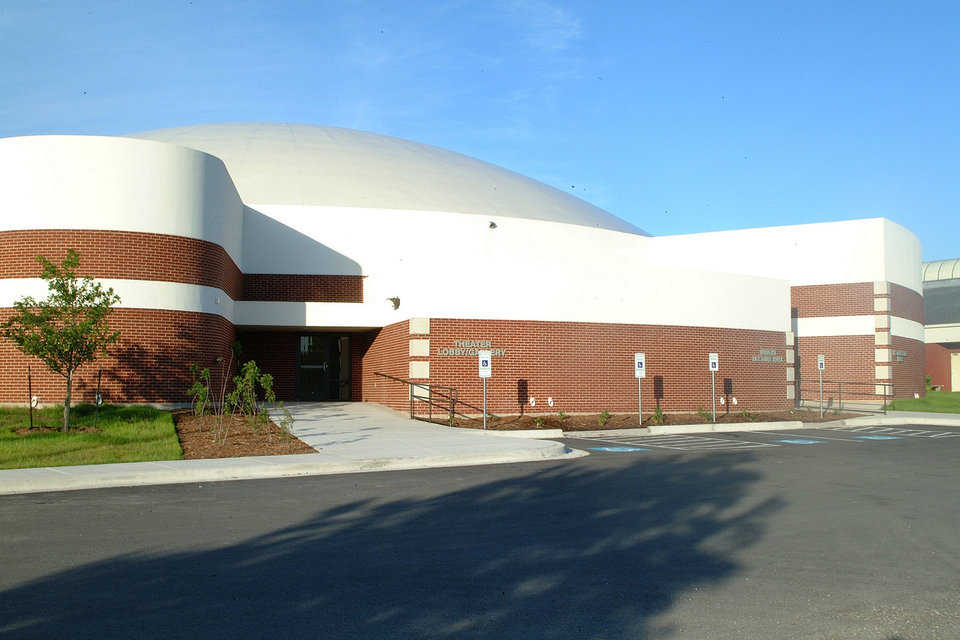
Recruiting tool — NCTC’s administrators view their Performing Arts Center as a powerful recruiting tool.
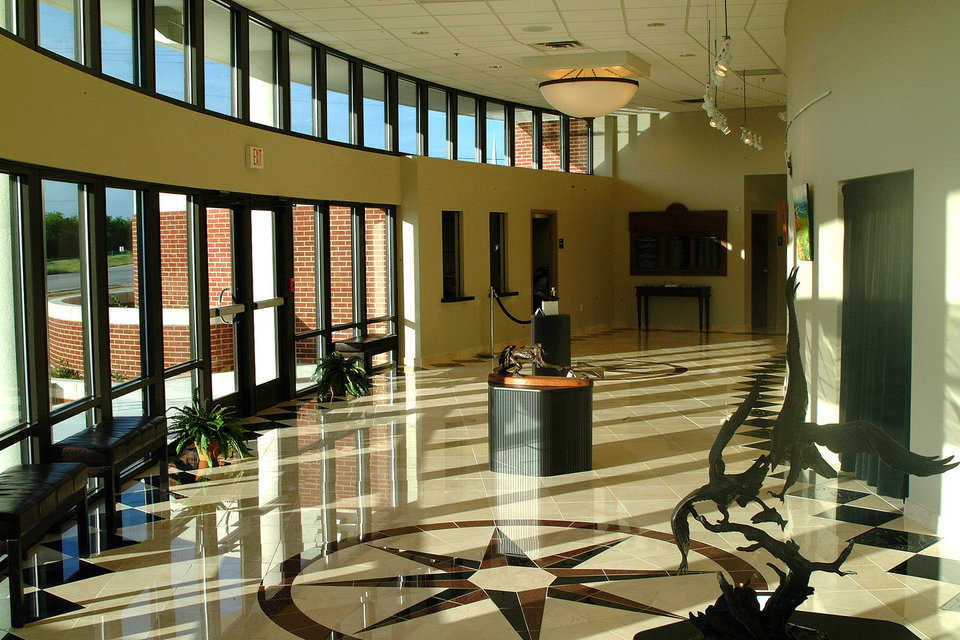
Lobby-Gallery — It curves around the 360-seat proscenium theater and provides a display area for students’ paintings, sculptures, jewelry and other creative items.
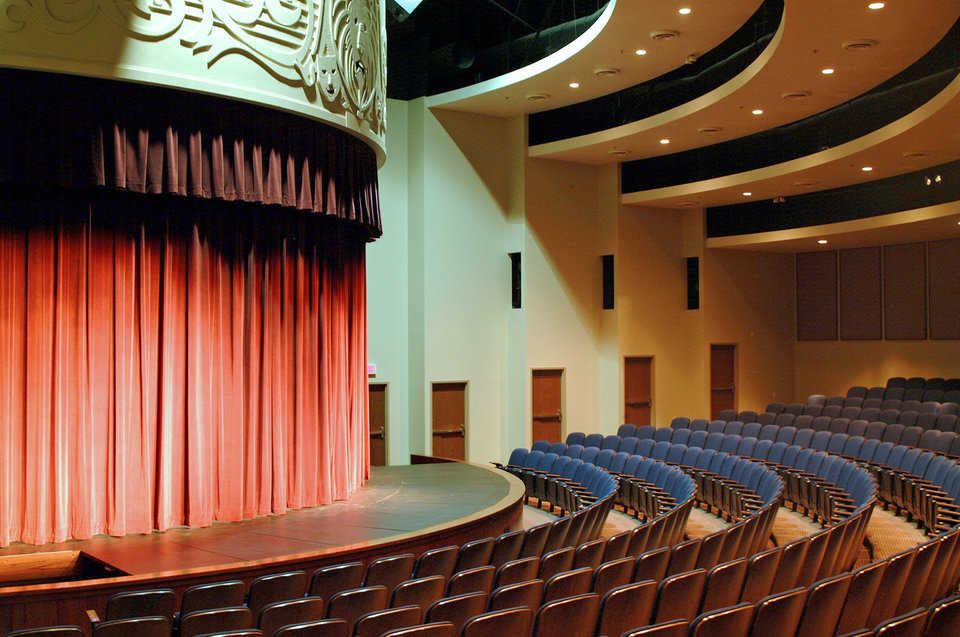
Theatre seating — Three hundred sixty roomy, upholstered seats are arranged in a classic Continental pattern with no center aisle, but with extra wide spaces between the rows.
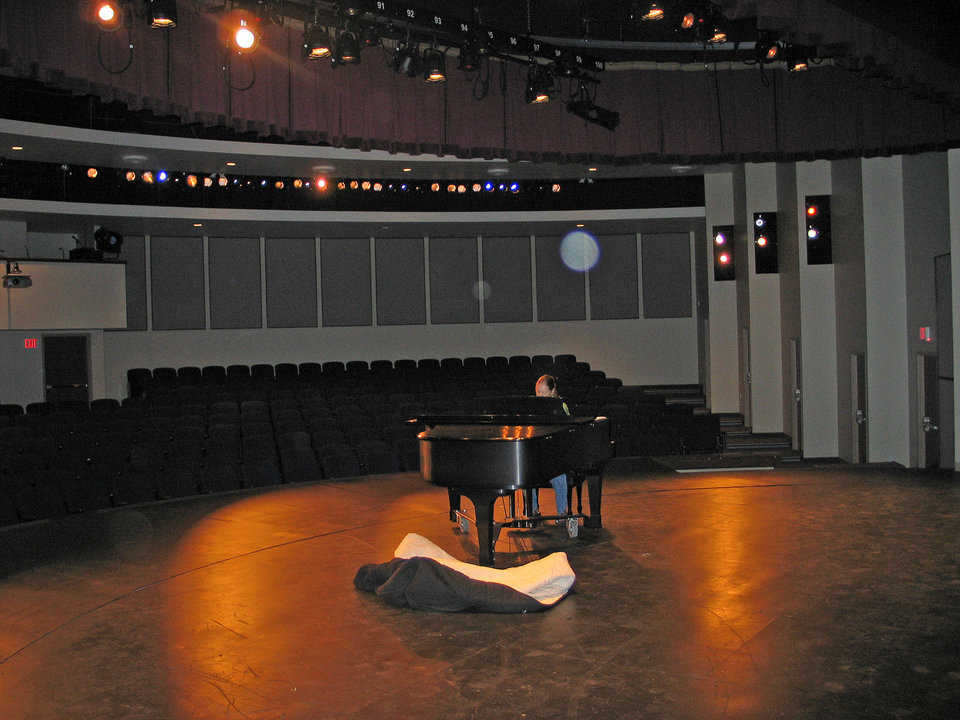
Acoustics — The fine-tuning included evaluating all its exposed surfaces, then adding certain materials that absorb undesirable echoes and frequencies but allow others to focus out into the audience.
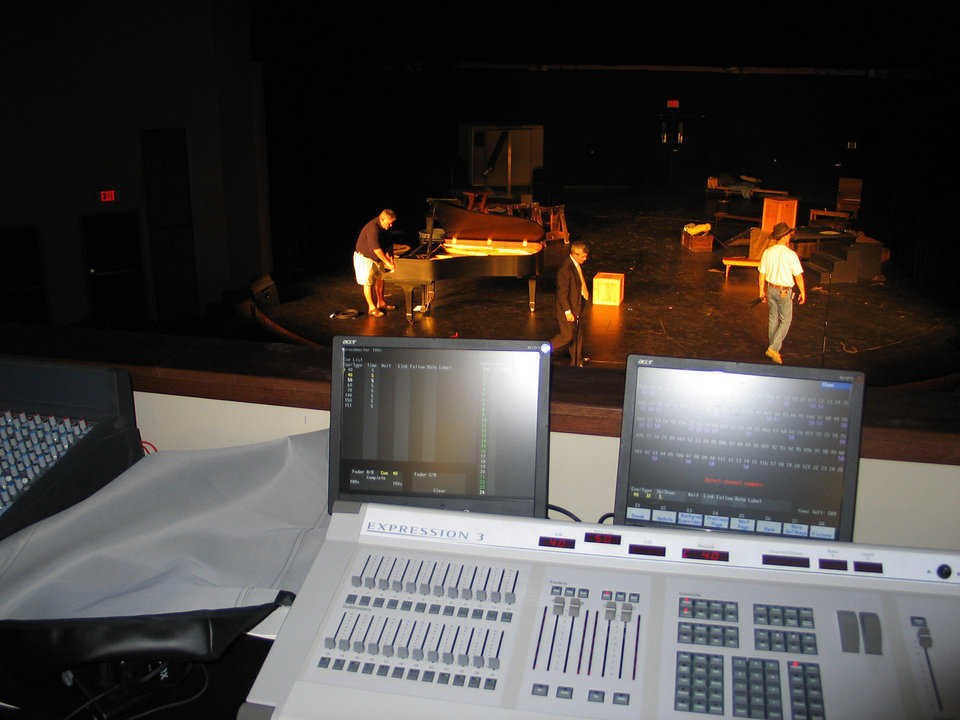
State of the art — The FSB Center has technologically sophisticated audio, visual and lighting equipment.
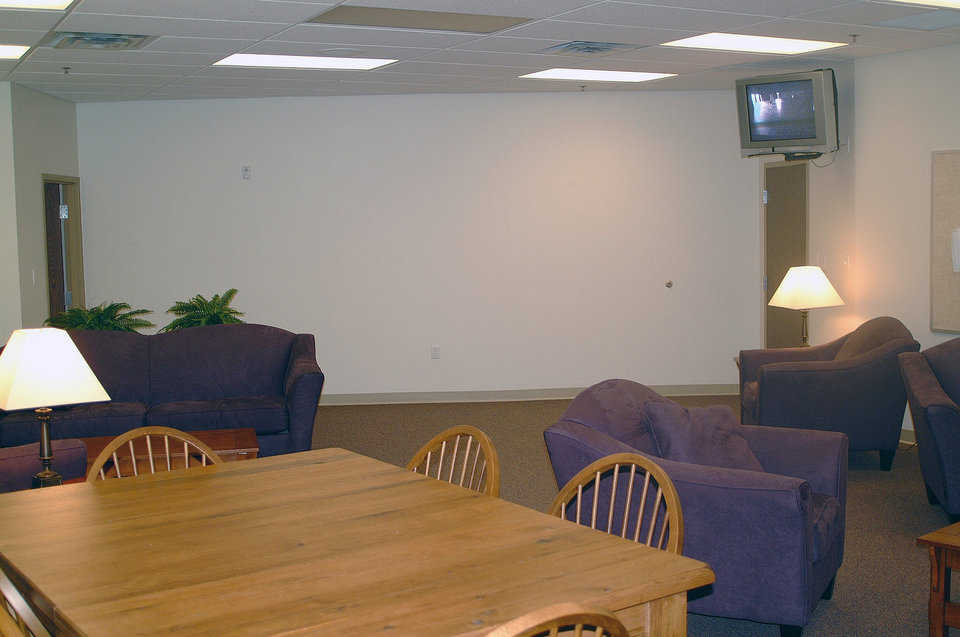
An ivory Green Room — Before going on stage, performers can relax in their Green Room which isn’t really green.
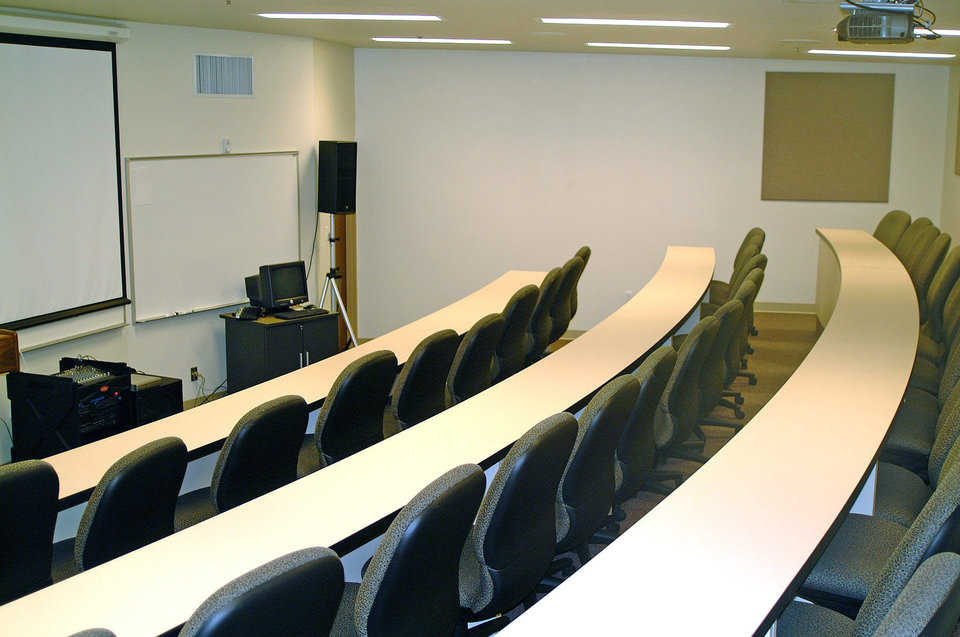
Lecture Hall — This 40-seat Lecture Hall is equipped for power-point presentations.
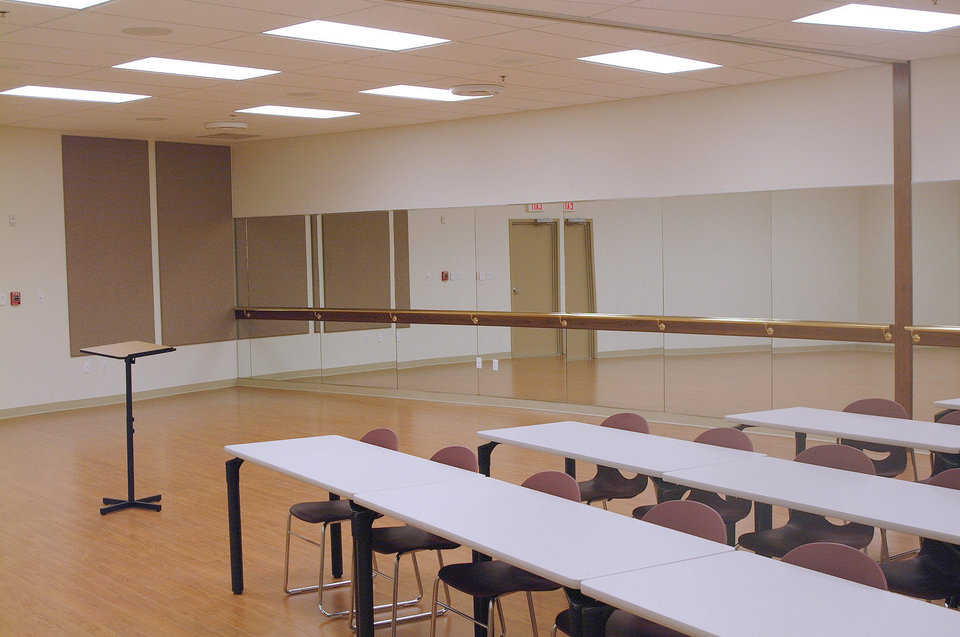
Special spaces — The FSB Center includes rooms for just about every artistic college activity.
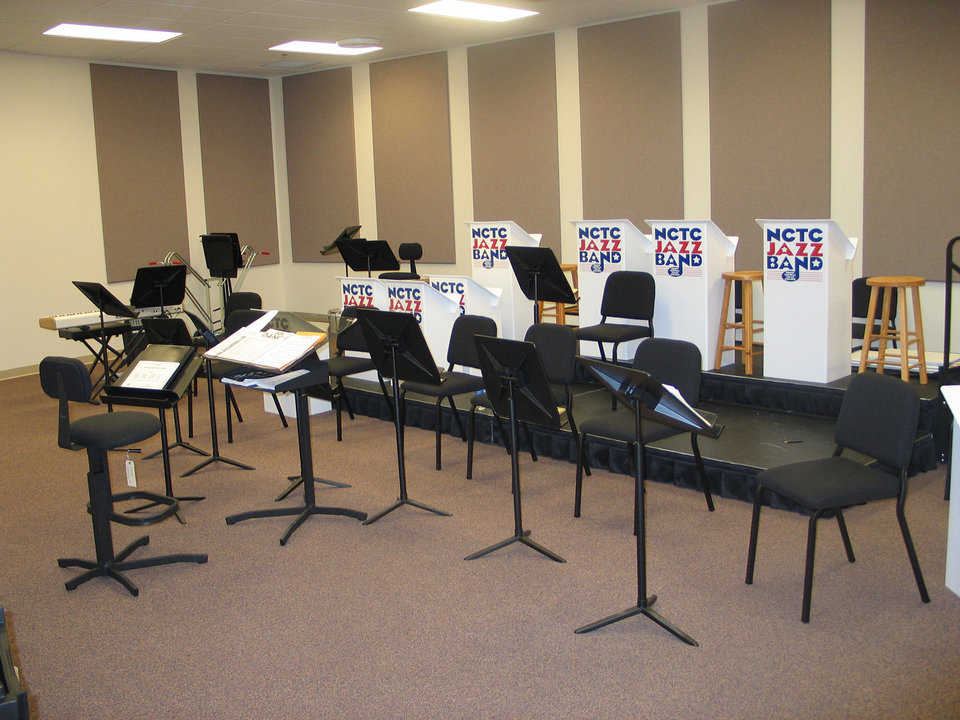
Rehearsal Room — Used for rehearsals of instrumental performances, this room includes Wenger equipment.
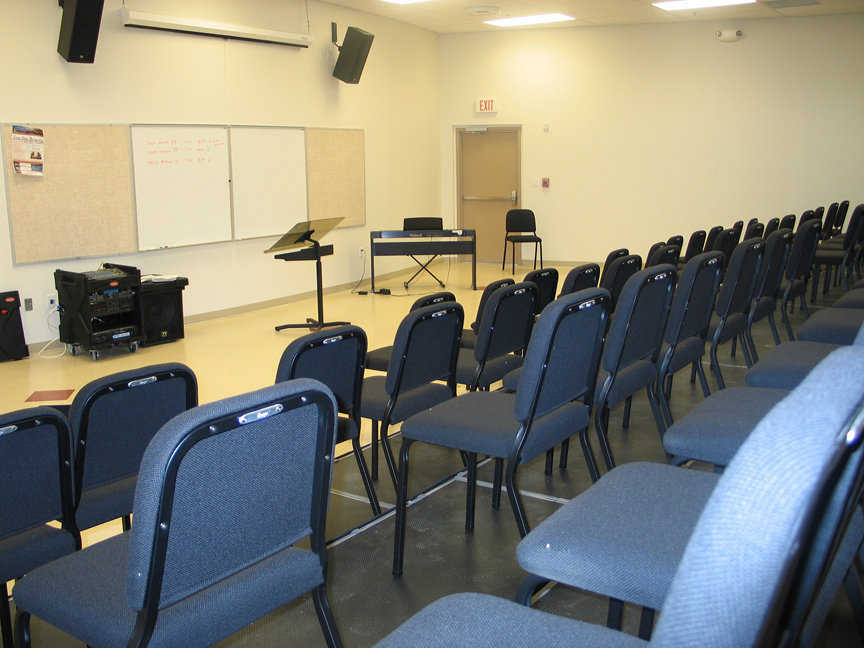
Room of their own — NCTC’s singing groups now have a room of their very own for rehearsals.
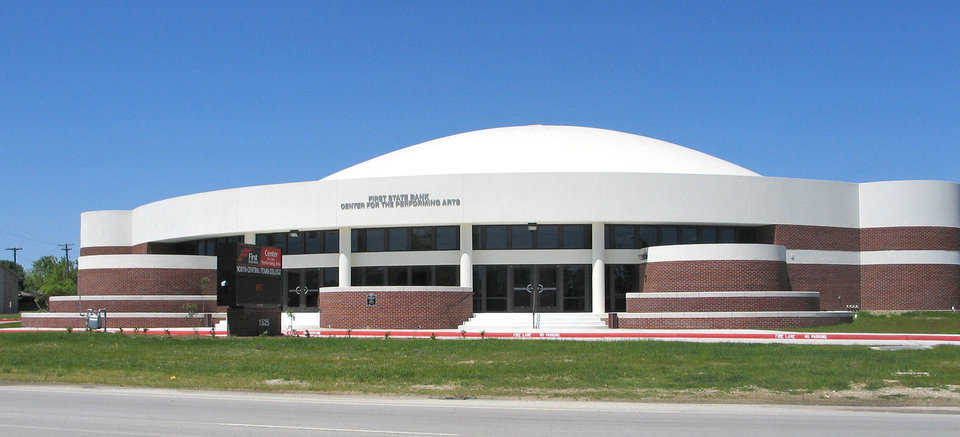
Performing Arts Center — This Monolithic Dome has a diameter of 130 feet and an 8-inch-thick concrete stemwall that is 18 feet high. Overall size: 25,600 square feet.
